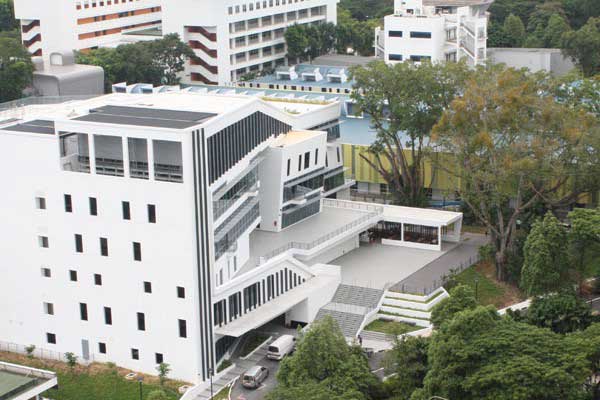How do you design a school for design students? For Singapore Polytechnic, the environment had to help shape students’ design thinking, inspire and spark new ideas and discourse.

September 15th, 2014
For its new design school, Singapore Polytechnic was naturally looking to build an environment that would inspire greater creativity, discourse and collaboration amongst its students and teachers.
“The approach was to create a form of ‘living lab’ or a ‘studio incubator’ that encouraged openness, innovation and experimentation,” says RSP Architects Planners & Engineers.
To that end, the architects have created an open and transparent learning environment through the generous use of glass and open views into the studios. Double volume spaces within studios allow natural light to penetrate the interior, while enabling activities from inside to be viewed from the central corridor above. A variety of gallery spaces, studios, outdoor refreshment areas, and rooftop and landscaped plazas also offer different learning environments that students and lecturers can utilise creatively.
Four matured Ficus trees on site had to be conserved. Taking them as inspiration, the building facade loosely reflects a tree-house form, with the studios situated atop the design laboratories.
One of the challenges facing this project was a sloping terrain. To mitigate the loss of green views, “a stepped landscaping approach was adopted” says the architecture firm.
A green roof deck wraps around and connects the four academic blocks, while stepped landscaped decks cascade down towards the inner courtyard, integrating with the four Ficus trees.
Aside from considerations for the surrounding landscape, the architects have also made a strong statement on sustainability with the extensive incorporation of green features. The most efficient energy performance values for managing indoor environmental air quality, cooling and day lighting were determined using design tools. Holistic environmental simulations were also carried out to define standards for glazing, building materials, finishing and ambient air temperature.
The school, which was awarded BCA’s Green Mark Platinum Award, is expected to be able to enjoy potential energy savings of more than 30% each year or 2,153, 835 kWh.
Photos courtesy of Singapore Polytechnic
RSP Architects Planners & Engineers
rsp.com.sg
A searchable and comprehensive guide for specifying leading products and their suppliers
Keep up to date with the latest and greatest from our industry BFF's!

XTRA celebrates the distinctive and unexpected work of Magis in their Singapore showroom.

Following its successful inaugural event in early 2024, the Vietnam International Trade Fair for Apparel, Textiles, and Textile Technologies (VIATT) is gearing up for its next instalment in 2025.

In this candid interview, the culinary mastermind behind Singapore’s Nouri and Appetite talks about food as an act of human connection that transcends borders and accolades, the crucial role of technology in preserving its unifying power, and finding a kindred spirit in Gaggenau’s reverence for tradition and relentless pursuit of innovation.

Designed by FARM, the newly opened Hafary House prioritises customer engagement through an immersive and sensory shopping experience. Here’s what you can expect.

The Standard has opened in Singapore, offering sophisticated hotel and hospitality design amidst lush greenery in a serene pocket of the city.
The internet never sleeps! Here's the stuff you might have missed